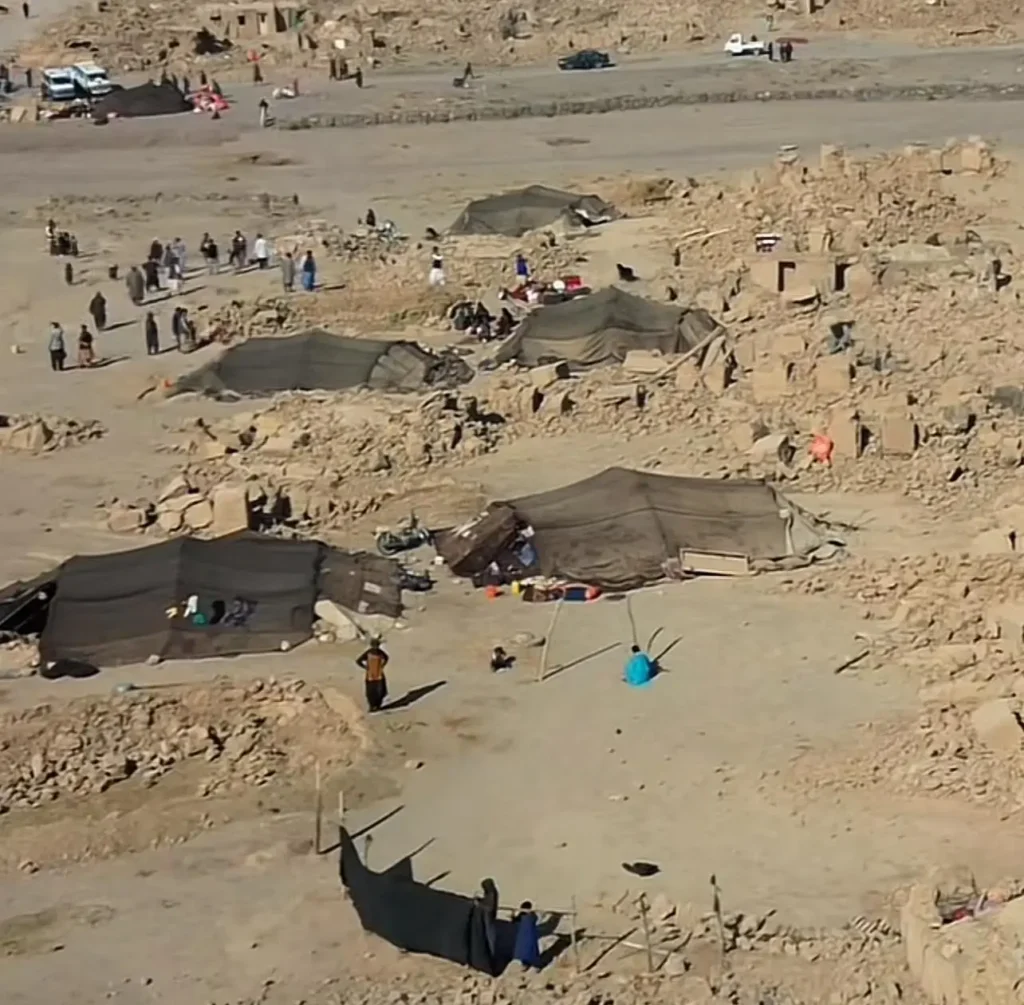Afghanistan was shaken Sunday evening when a powerful 6.0-magnitude earthquake shook Afghanistan’s eastern provinces, killing more than 600 and injuring thousands, as reported by international media sources and Afghan authorities. The disaster has flattened villages, triggered landslides, and left survivors struggling to survive in one of the world’s most exposed regions.
A Midnight Disaster
The earthquake struck at midnight, focused on the Kunar-Nangarhar border region, 27 kilometers northeast of the city of Jalalabad. Though moderate in strength, the shallow depth of the quiver of just 8 to 10 kilometers amplified its destruction. Entire villages, whose people lived in their traditional mud-brick homes, were caught off guard as their houses crumbled right away.
In Kunar province’s Nurgal district, the area officials said entire villages were flattened. The people who survived described hearing a “roaring thunder” moments before their homes came tumbling down. A resident told journalists, “I lost my wife and two children within seconds. We have nothing left.”
Rising Death Toll
Early accounts from Afghanistan’s Interior Ministry confirmed at least 622 killed and over 1,500 injured, mostly in Kunar. Casualties also occurred in Nangarhar, with estimates released by non-governmental humanitarian groups that suggest the total could climb much higher as rescuers attempt to reach the area.
A few overseas media outlets, citing local hospitals and rescue teams, put the number at approximately 800 deaths and nearly 3,000 injured. It indicates the magnitude of the task of receiving right information in remote hilly areas, where roads have been cut off by landslides and aftershocks.
To Afghans, the scale of this tragedy reminds them of the June earthquake in 2022, which claimed over 1,000 lives in the southeast. Once again, the nation is confronted with tragedy with under-resourced capacities and urgent humanitarian needs.
Rescue Under Strain
Rescue operations began at dawn on Monday morning, but the challenge is monumental. Helicopters have been flying in injured to hospitals in Kabul and Jalalabad, at least 40 flights evacuating more than 400 victims established by authorities within the first 24 hours. Emergency tents and makeshift camps are being set up for those who’ve lost their homes.
But relief workers report that survivors remain buried under debris. Landslides block roads in some areas, rendering it nearly impossible for ground units to deliver aid. The Taliban regime has deployed military troops to help with the relief effort, but the nation’s sparse infrastructure and fragile health care system are being pushed to their limits.
Humanitarian Concerns
The earthquake comes at a time when Afghanistan is facing severe humanitarian pressure. The country is suffering from ongoing drought, chronic poverty, and repatriation of hundreds of thousands of Afghan refugees settled elsewhere. Already stretched to its limit, international humanitarian organizations warn of a “perfect storm” of disasters initiated by this earthquake.
The United Nations has expressed serious concern and has dispatched emergency relief. “The Afghans have suffered long enough,” said a UN spokesman, urging the international community to act with haste.
Vulnerability to Earthquakes
Afghanistan is situated along an active fault line in the Hindu Kush, where shallow, and often deadly, earthquakes occur frequently. Rural villages are especially vulnerable because they have no earthquake-resistant infrastructure. Practically all the dwellings in the eastern provinces consist of unreinforced mud and wood-framed structures that offer little protection against vibrations.
Experts note that while the 6.0 magnitude earthquake would not have been so devastating in developed countries, poor construction and unforgiving terrain have made this disaster disastrous.
A Nation in Mourning
While rescue operations continue, Afghanistan awaits days of grief and uncertainty. Families are searching streets for missing relatives, hospitals are bursting with a flood of patients, and survivors are taking refuge in open fields, fearful of aftershocks and with minimal relief from the warmth of late summer.
Images from global media show blankets wound around lines of corpses, mass process burial, and family members standing with photographs of the missing. Aid workers describe scenes of desperation, children wandering in ruins searching for parents.
This earthquake, among the most damaging in years, again highlights the precarious position of a nation trapped between natural disasters and political isolation. With the death toll continuing to climb, Afghanistan’s call for aid is one that is easy to see and the world’s response over the next few days could very well determine how quickly survivors can get back on their feet.
Read Recent News
Heartbreak at East Coast Park: Missing Boy’s Death
SG Culture Pass Launches to Encourage Singaporeans to Engage with Local Arts and Heritage
